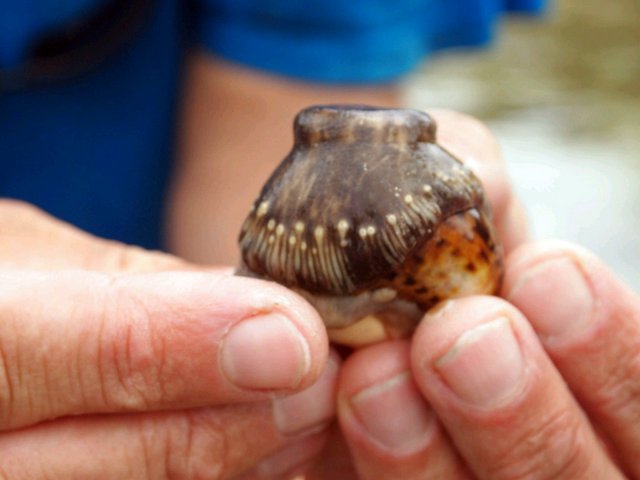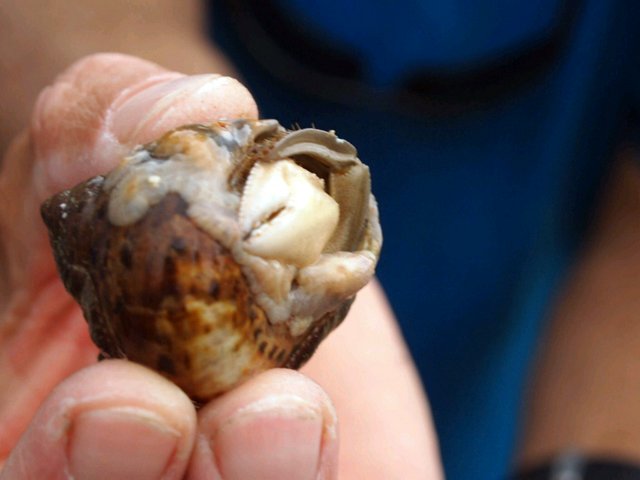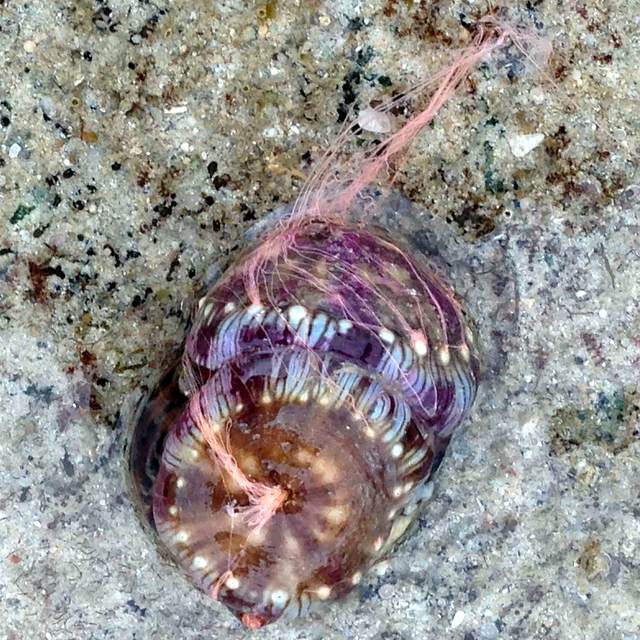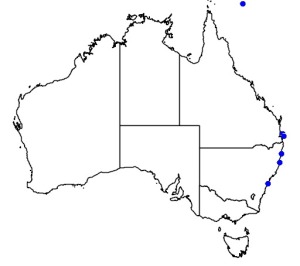
©David Witherall and Sigrid Pope: Hermit Crab Anemone, Calliactis polypus, Normanby Island Rock pools, releasing defensive pink substance

©David Witherall and Sigrid Pope: Hermit Crab Anemone, Calliactis polypus, Normanby Island Rock pools, releasing defensive pink substance
Colours
Distinguishing features
This sea anenome is usually found living on the surface of a sea snail shell in which a hermit crab is living. Several anemones can grow on one shell.
The base is wide with wavy edges and pink striations and flares out over the shell surface. The column is wider at the base than further up and has pale brown and white patches and longitudinal striations. The oral disc has several whorls of long brownish translucent tentacles with paler bases surrounding the mouth. (Wikipedia)
Size
- Up to 8 cm (Total length of tentacles and body)
Depth range
- Up to 25 m
Synonyms
Comments
All Calliactis species are commensal with hermit crabs. The stinging cells on their tentacles provide protection for the crab and the anemone gains food scraps from the crab. The species in the photo is tentatively identified as C. polypus.
by Anne Hoggett
Distribution
Behaviour
The anemone shows no inclination to attach itself to a gastropod shell with or without a hermit crab. However the crab shows great interest in the anemone and taps and massages the base of the column with its legs until the anemone relaxes and the pedal disc becomes detached. The crab then picks up the anemone and holds it against the shell in which it is living. Both the pedal disc and the tentacles are very sticky and either can quickly form a firm attachment to the shell. (Wikipedia)



